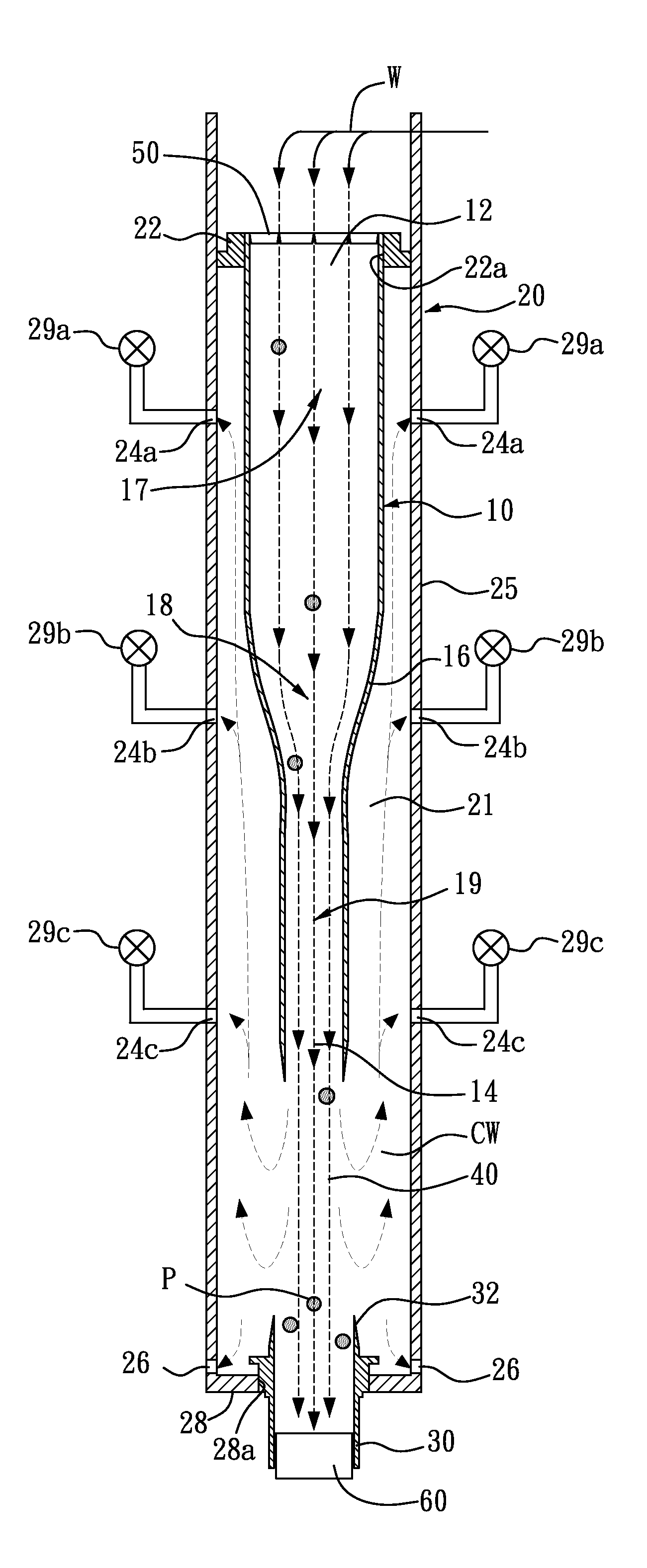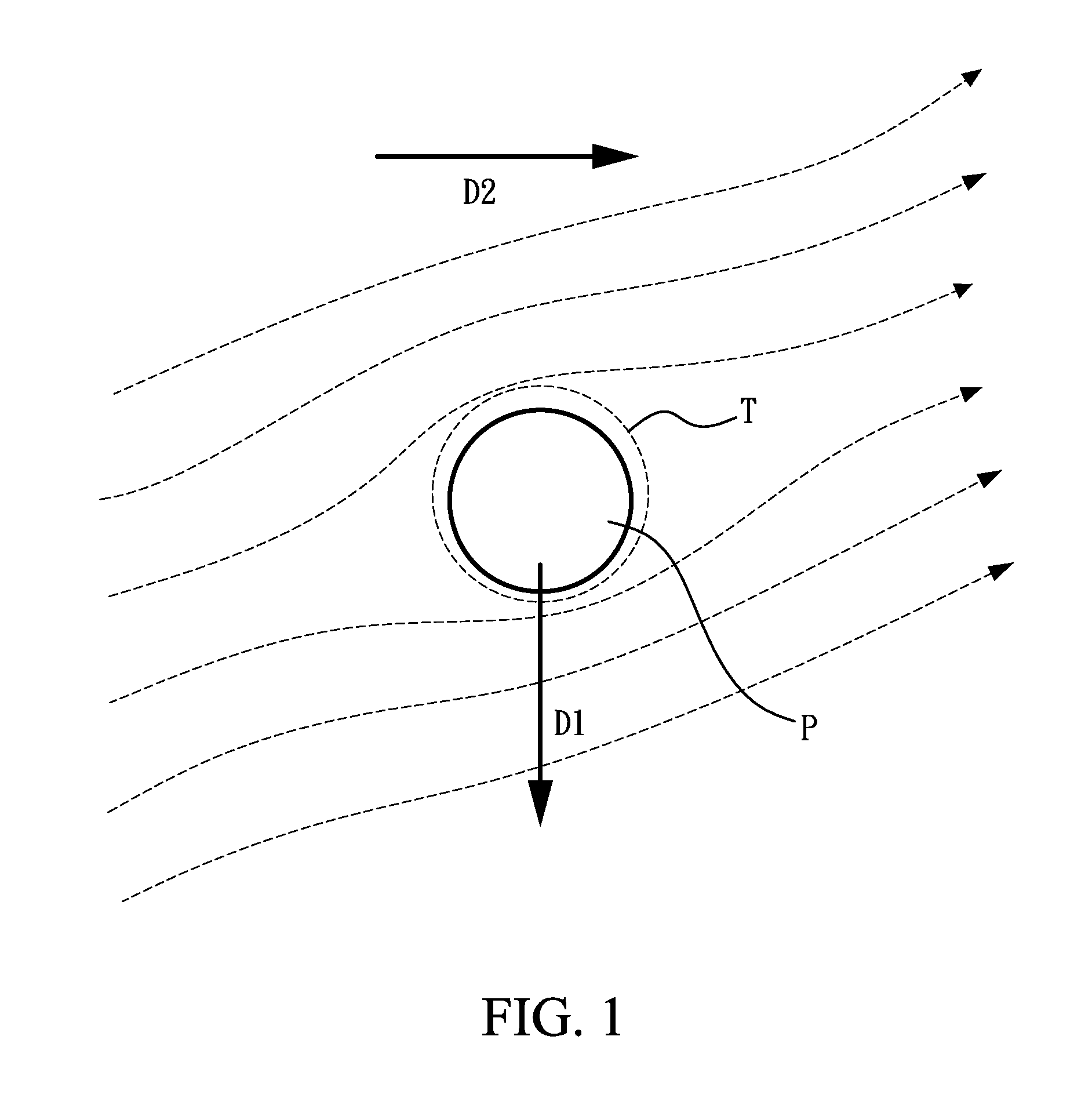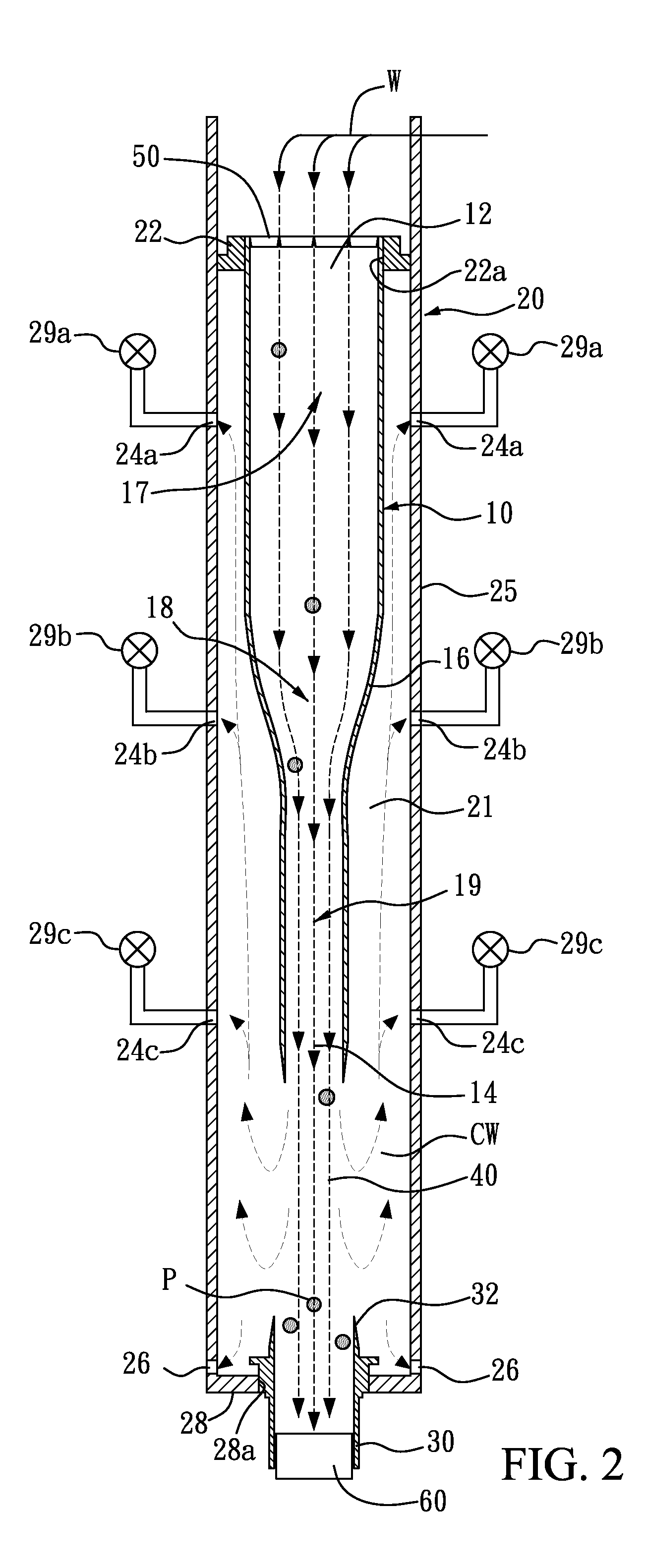Particle-accelerating deposition and separation apparatus and method for turbid water
a separation apparatus and turbid water technology, applied in the direction of sedimentation settling tanks, liquid displacement, separation processes, etc., can solve the problems of affecting the purification function affecting the purification effect of water treatment facilities, and containing a tremendous amount of suspended particles on the surfa
- Summary
- Abstract
- Description
- Claims
- Application Information
AI Technical Summary
Benefits of technology
Problems solved by technology
Method used
Image
Examples
Embodiment Construction
[0027]In FIGS. 2-3, the embodiment of the present invention relates to a particle-accelerating deposition and separation apparatus and method in an undisturbed laminar flow. The apparatus mainly contains: a housing 20, a hollow conical flow accelerator 10, a particle condenser 30, and a screen (i.e. a No. 200 screen 50). The housing 20 contains a hollow cylinder 25 provided with three clean water collecting pipes, namely the high, middle and low clean water collecting pipes 24a, 24b, 24c disposed on a peripheral wall thereof at various heights and equipped with at least one silt-removing outlet 26 on a bottom thereof. The hollow cylinder 25 has an inner diameter of approximately 15 centimeters and a height of approximately 105 centimeters, and can sustain the water pressure at a depth of 1.5 meters. The hollow cylinder 25 is 1 cm thick, made of acrylic, stainless steel, PVC or other materials with a smooth internal surface, and suitable for long-term continuous use with high-turbidi...
PUM
| Property | Measurement | Unit |
|---|---|---|
| height | aaaaa | aaaaa |
| height | aaaaa | aaaaa |
| inner diameter | aaaaa | aaaaa |
Abstract
Description
Claims
Application Information
 Login to View More
Login to View More - R&D
- Intellectual Property
- Life Sciences
- Materials
- Tech Scout
- Unparalleled Data Quality
- Higher Quality Content
- 60% Fewer Hallucinations
Browse by: Latest US Patents, China's latest patents, Technical Efficacy Thesaurus, Application Domain, Technology Topic, Popular Technical Reports.
© 2025 PatSnap. All rights reserved.Legal|Privacy policy|Modern Slavery Act Transparency Statement|Sitemap|About US| Contact US: help@patsnap.com



